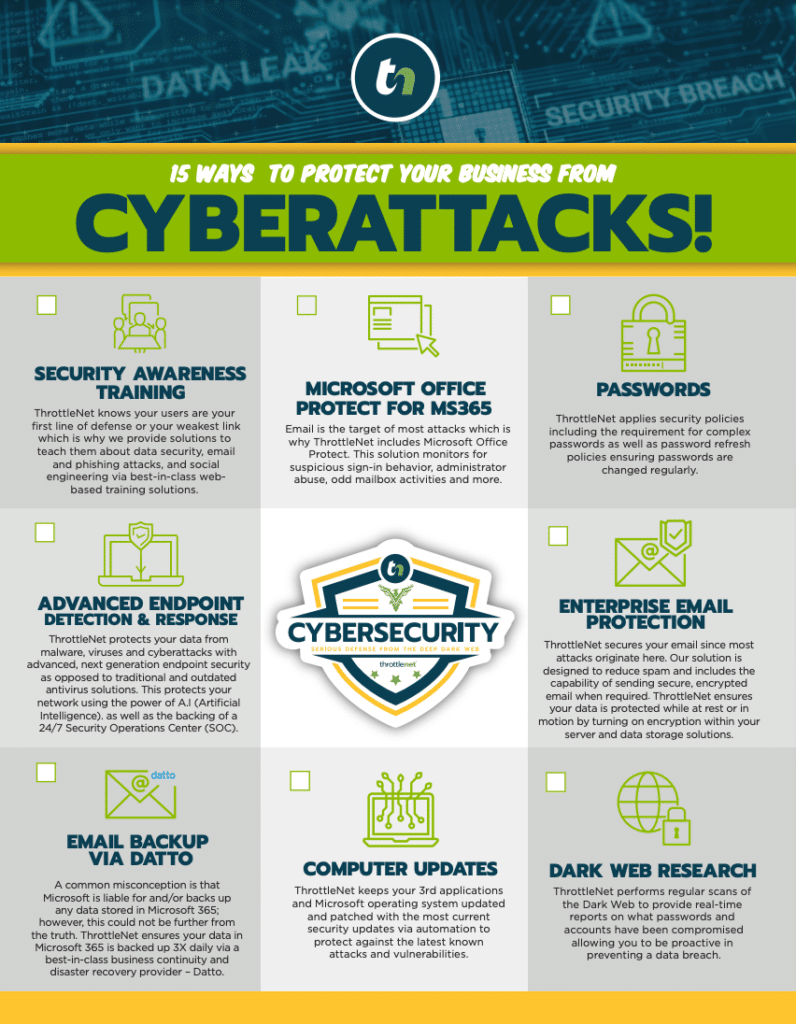For businesses that generate $10 million in annual revenue, the cost of IT downtime can be devastating. Whether due to cyberattacks, IT failures, or network outages, every hour of lost productivity translates directly into lost revenue, frustrated employees, and damaged customer relationships.
Many small and mid-sized businesses (SMBs) attempt to manage IT in-house, often relying on an employee who already has another full-time role. While this may seem like a cost-saving measure, the reality is that reactive IT support and inadequate cybersecurity protections lead to far greater financial losses than a proactive IT strategy.
Let’s break down the true cost of IT downtime for a 50-employee business generating $10 million in revenue and how investing in proactive IT and cybersecurity solutions saves money in the long run.

The Financial Impact of Downtime for a $10M Business
A business with $10 million in annual revenue operates at approximately $833,333 per month or $27,397 per day. Any disruption that prevents employees from working effectively results in lost revenue, productivity, and potential customer dissatisfaction.
1. The Cost of Downtime Per Hour
Industry research suggests that the average cost of IT downtime for SMBs ranges from $5,000 to $10,000 per hour, depending on industry and reliance on technology.
For a 50-employee business with $10M in revenue, let’s calculate the hourly loss due to downtime:
- Daily revenue lost per hour of downtime (assuming an 8-hour workday):
$27,397 / 8 hours = $3,425 per hour - Employee productivity loss per hour (50 employees):
Assume each employee generates $50/hr in value
50 employees × $50/hr = $2,500 per hour - Total cost of downtime per hour:
Revenue loss ($3,425) + productivity loss ($2,500) = $5,925 per hour
Now, imagine an 8-hour full-day outage caused by a cyberattack, server crash, or ransomware event:
- 8-hour downtime event = $47,400 lost in a single day
If critical IT failures happen multiple times a year, a company could easily lose over $200,000 annually in cost of IT downtime.
Case Study: The Hidden Cost of an Employee Serving as IT
Many SMBs assign IT responsibilities to an internal employee who already has another job, often in operations, finance, or admin. This may seem like a way to save money, but the losses in efficiency, productivity, and IT expertise often far outweigh the perceived savings.
Let’s examine the real cost of a $50,000-per-year employee (e.g., an office manager, finance coordinator, or operations lead) handling IT responsibilities in addition to their regular role.
1. Productivity Loss for the Employee Handling IT
- If the employee spends 5 hours per week on IT issues (1 hour per day), that equals 260 hours per year.
- Their hourly rate is approximately $24/hr ($50,000 / 2,080 hours per year).
- 260 hours × $24/hr = $6,240 in lost productivity annually.
2. Hidden Inefficiencies & Increased Downtime
- Lack of IT expertise: Non-technical employees lack the knowledge to properly secure systems or troubleshoot issues, leading to longer resolution times and higher security risks.
- Inconsistent IT support: IT becomes reactive instead of proactive, meaning issues only get fixed after they break, leading to more downtime and inefficiencies.
- Failure to update and patch systems: Unpatched software and poor security practices increase the risk of cyberattacks, which could cost hundreds of thousands in damages.
Total Estimated Losses:
- $6,240 in productivity loss
- Increased downtime and security risks (~$20,000 – $50,000 per year in potential losses)
- IT mismanagement leads to inefficiencies across the company
Instead of “saving money” by assigning IT duties to an untrained employee, businesses end up losing $30,000 – $50,000 per year or more due to inefficiencies and security risks.
How Proactive IT & Cybersecurity Save Money
Investing in a Managed IT Service Provider (MSP) with cybersecurity expertise can dramatically reduce downtime costs, security risks, and lost productivity. Here’s how:
1. Prevent Downtime Before It Happens
- 24/7 Monitoring & Automated Alerts: Identify and fix issues before they cause disruptions.
- Proactive Maintenance: Regular system updates, patching, and monitoring prevent failures.
- Faster Incident Response: Instead of waiting hours or days for an in-house employee to troubleshoot, expert IT professionals resolve issues quickly.
Estimated Annual Savings: $50,000+ in prevented downtime and lost revenue
2. Reduce Cybersecurity Risks & Avoid Data Breaches
Cybersecurity Best Practices:
- Multi-Factor Authentication (MFA), endpoint security, and secure backups reduce breach risks
- Threat Detection & Response: AI-driven monitoring stops ransomware attacks before they spread
- Regulatory Compliance: Stay compliant with HIPAA, PCI DSS, and avoid costly fines
Estimated Cost Savings: Avoiding a single ransomware attack can save a business $200,000+
3. Improve Employee Productivity & Efficiency
- Eliminate IT distractions for non-IT employees
- Faster support & troubleshooting = more uptime for employees
- Secure cloud & remote access solutions enable employees to work more efficiently
Estimated Cost Savings: $30,000 – $50,000+ in productivity improvements
Final Verdict: Investing in IT & Cybersecurity Saves More Than It Costs
Without Proactive IT Support:
- $47,400 lost per 8-hour outage
- $6,240 lost from an employee handling IT part-time
- $50,000+ lost annually in inefficiencies & security risks
- Total potential losses: $100,000 – $300,000 per year
With Proactive IT & Cybersecurity Support:
- Faster response time & resolution of issues
- $50,000+ saved in avoided downtime and increased efficiency
- Protection from ransomware and data breaches
The ROI of proactive support is clear: avoiding the cost of IT downtime can have a dramatic impact on your bottom line.
Act: Secure Your Business Before Downtime Costs You More
If your business is generating $10M+ in annual revenue, even one day of IT downtime can cost tens of thousands of dollars. Instead of relying on untrained employees or waiting for systems to break, invest in a proactive IT and cybersecurity strategy that protects your bottom line and eliminates the cost of IT downtime.

Chris Montgomery
ThrottleNet Sales Director
cmontgomery@throttlenet.com



